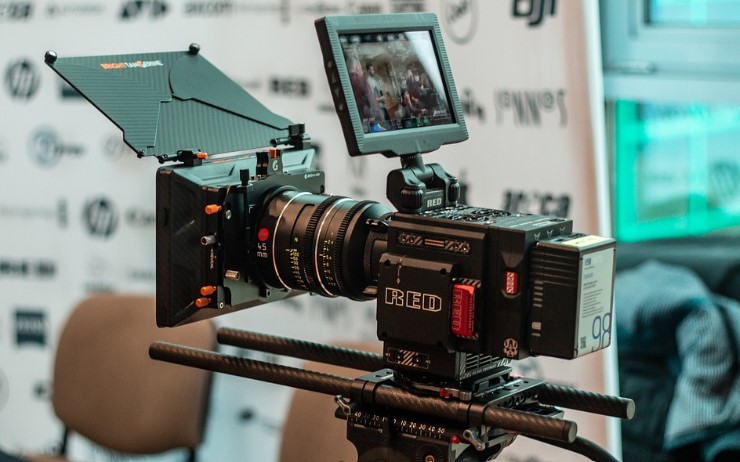There’s no denying that videography is an excellent skill to possess. Being a videographer means you can capture all kinds of things and know how to do so professionally.
If you’re a budding videographer, and perhaps you’d like to develop your skills to become a fully-skilled professional in the industry, you likely want some hints and tips to help you be the best at what you do.
Technology can help you achieve that goal. While it’s essential that you grasp the basics of videography, it’s also good to know how you can use technology to improve the quality of your footage.
With the above in mind, take a look at the following ways that technology can assist you as an aspiring videographer:
1. Invest In Premium Equipment
It’s no secret that filmmakers have been using all kinds of equipment to obtain footage for their movies. For example, some filmmakers will use high-end equipment, while others might use nothing more than their iPhones.
If you want to get considered a professional videographer, you will need to have access to the best equipment possible. In short, that means investing in premium filmmaking cameras, lenses, and accessories for each production.
As you can imagine, buying all that equipment is a considerable investment. However, if you want to set up a videography business or get considered for filming some of the newest Hollywood blockbusters, you’ll need professional kit for a professional job.
2. Experiment With Drone Videography
Another idea to help you improve your videography skills and experience is to use drones for aerial footage. Many drones exist, and you won’t find it hard to locate one suitable for your filmmaking needs.
For example, you might consider the DJI Mini 2, although there are rumours of a new Mini 3 coming out; learn more about the potential new features of the next-generation DJI drone and how it could help you with your filmmaking.
If you’re new to drones, consider buying a small, inexpensive one so you can learn how to navigate it through the air.
3. Use The Right Lighting
One of the most crucial elements of any successful filmmaking project is the lighting. If you don’t have the best lighting for each scene, you could end up ruining it, and your movie viewers may not be able to see the action unfolding in that scene.
With that in mind, invest in several different lighting setups for your filmmaking needs and use them appropriately in each scene. For example, you might consider some LED lighting panels to help illuminate dark locations with a crisp, clean and bright white light.
4. Plan Your Shoots
While it’s true that some filmmakers don’t use much equipment to record their scenes, what all successful videographers have in common is how they plan their films and the way each scene should get shot.
As with most things in life, making a plan will help you get closer to your objective, and the same applies to the world of filmmaking. But, how can you use technology to help you plan your shots and films?
One example might be to invest in rails that you place on the ground, so you can roll your camera across an even surface to capture people walking or running down the street.
5. Select The Best Lens For The Job
Digital cameras use lenses to help focus on distant objects or capture scenes in specific ways. Some may include filters to make a daytime scene appear like it got shot in the middle of the night.
Video cameras also uses lenses that you can swap for specific models, so it’s worth investing in a selection of lenses to help you capture each scene perfectly.
For example, you may want to capture action several feet away and give viewers a first-person view of action taking place in an adjacent building.
6. Use Screenwriting Software
It makes no difference whether you’re filming a micro-budget movie with some friends or you’re part of a professional team filming a new Netflix production. If you have actors and actresses in your footage, they need to know what to say, what to do, and how to act in all scenes you capture.
Screenwriting software is an excellent way to ensure that everybody knows what they’re doing on set, and it helps you plan your footage even before any filming takes place.
7. Invest In Storyboard Software
Another practical way that technology can give your productions a helping hand is by utilising storyboard software. Why would you want to use storyboard software, you might ask yourself?
The reason is this: storyboards will help you bring your creative visions to life and enable you to make changes to the direction of your production without wasting time and money filming unnecessarily.
8. Buy A Beefy Production Computer
If you’re a solo videographer, the chances are high that you use a computer for processing your footage and editing your films. The thing is, you need a system with superior specifications to do that work efficiently.
There was once a time when movie studios would only recommend Apple Mac computers for the job. But, it’s now possible to use Windows PCs with powerful production editing software at a fraction of the cost of Macs.
9. Download A Light Tracking Smartphone App
When you’re outside filming scenes in the middle of the day, you want to ensure that you can capture each outdoor scene perfectly without sunlight blinding you or your viewers.
The way to do that is by using a simple piece of technology: light tracking apps for smartphones. They can tell you the exact location of sunlight at any given moment, either now or later in the day.
10. Use Green Screen Technology
Last but not least, consider doing further experimentation with your films by using green screen technology. It will help you maximise your creative ideas and make your footage more powerful and engaging.

























